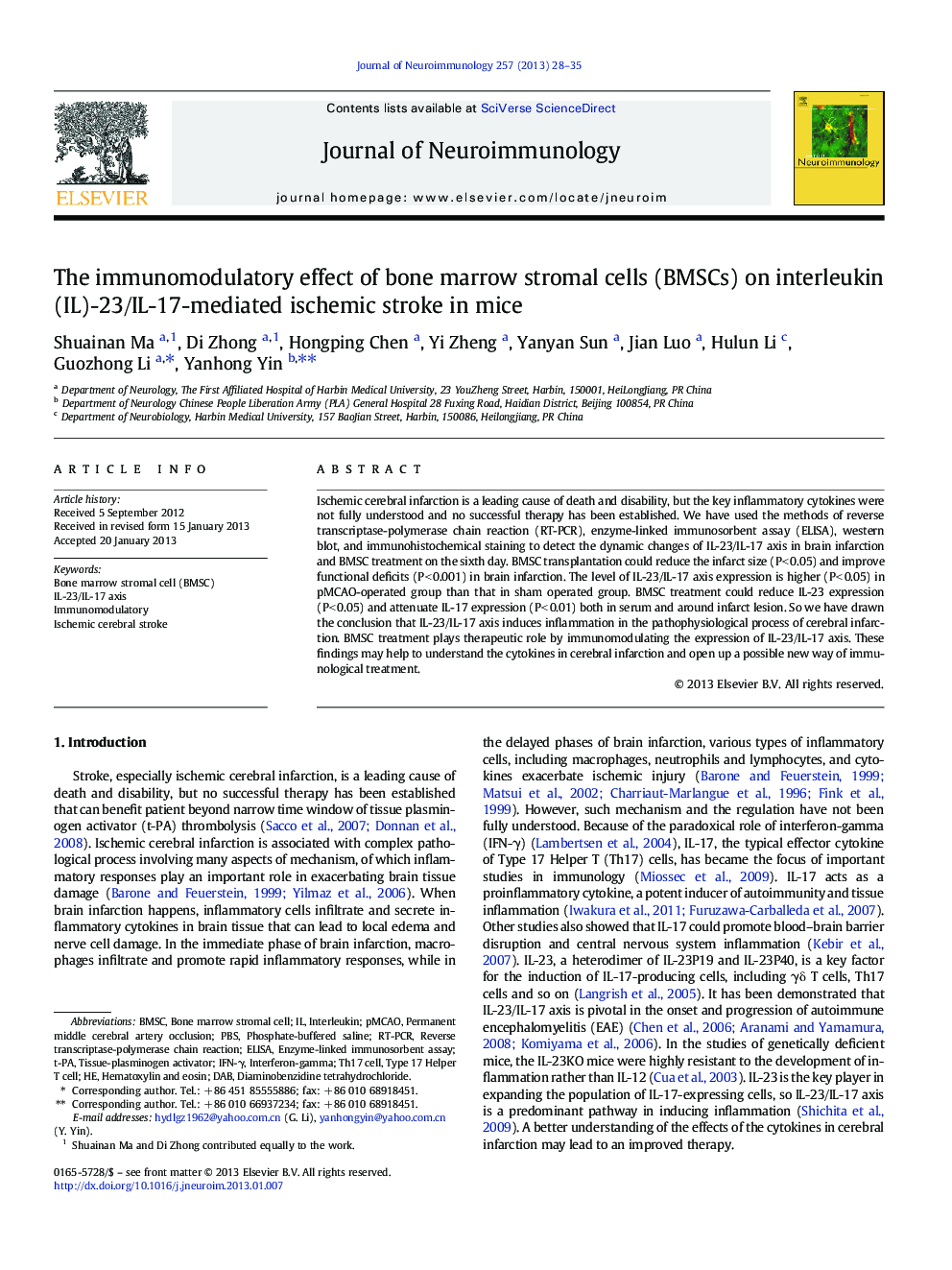| Article ID | Journal | Published Year | Pages | File Type |
|---|---|---|---|---|
| 6020700 | Journal of Neuroimmunology | 2013 | 8 Pages |
Abstract
Ischemic cerebral infarction is a leading cause of death and disability, but the key inflammatory cytokines were not fully understood and no successful therapy has been established. We have used the methods of reverse transcriptase-polymerase chain reaction (RT-PCR), enzyme-linked immunosorbent assay (ELISA), western blot, and immunohistochemical staining to detect the dynamic changes of IL-23/IL-17 axis in brain infarction and BMSC treatment on the sixth day. BMSC transplantation could reduce the infarct size (PÂ <Â 0.05) and improve functional deficits (PÂ <Â 0.001) in brain infarction. The level of IL-23/IL-17 axis expression is higher (PÂ <Â 0.05) in pMCAO-operated group than that in sham operated group. BMSC treatment could reduce IL-23 expression (PÂ <Â 0.05) and attenuate IL-17 expression (PÂ <Â 0.01) both in serum and around infarct lesion. So we have drawn the conclusion that IL-23/IL-17 axis induces inflammation in the pathophysiological process of cerebral infarction. BMSC treatment plays therapeutic role by immunomodulating the expression of IL-23/IL-17 axis. These findings may help to understand the cytokines in cerebral infarction and open up a possible new way of immunological treatment.
Keywords
Ischemic cerebral strokediaminobenzidine tetrahydrochloridepMCAOBMSCIFN-γt-PART-PCRtype 17 helper T cellPBSDABPermanent middle cerebral artery occlusionImmunomodulatoryinterferon-gammainterleukinEnzyme-linked immunosorbent assayELISATh17 cellBone marrow stromal cellTissue-plasminogen activatorPhosphate-buffered salineHematoxylin and EosinReverse transcriptase-polymerase chain reaction
Related Topics
Life Sciences
Immunology and Microbiology
Immunology
Authors
Shuainan Ma, Di Zhong, Hongping Chen, Yi Zheng, Yanyan Sun, Jian Luo, Hulun Li, Guozhong Li, Yanhong Yin,
